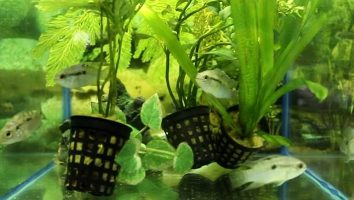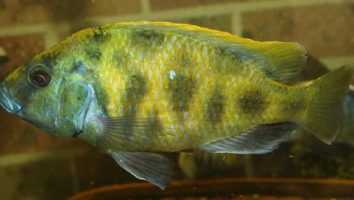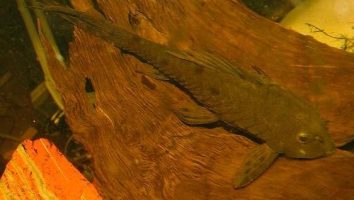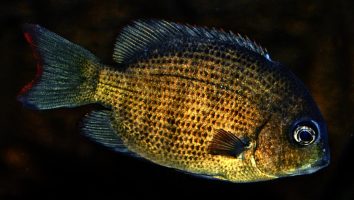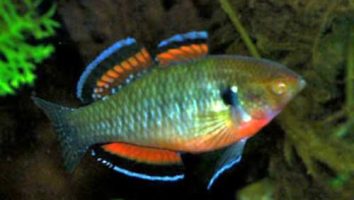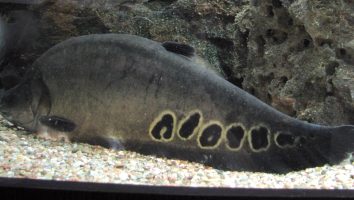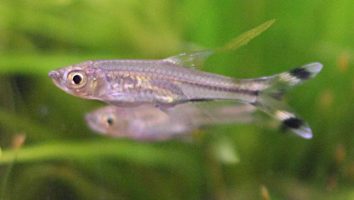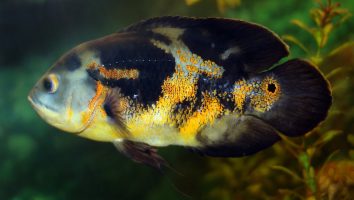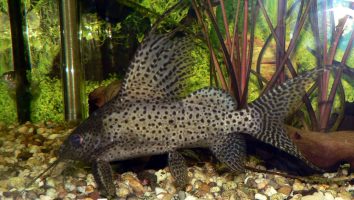The shovelnose sturgeon is a freshwater fish that is native to North America. It gets its name from its long, shovel-like snout.
This fish is a popular choice for aquariums because of its unique appearance and calm demeanor.
Shovelnose sturgeon are not difficult to care for, but there are a few things you need to know before you get one. In this guide, we will teach you everything you need to know about shovelnose sturgeon care.
Table of contents
Species overview
The shovelnose sturgeon (scientific name: Scaphirhynchus platorynchus) is a freshwater fish that’s found in a number of large river systems in North America. The most prominent of these rivers is the Missouri River, where a large population of shovelnose sturgeon can be found.
They have a wide, flat body that’s well-suited for life in rivers and streams. Their diet consists mostly of small fish, insects, and crustaceans.
Due to overfishing and habitat loss, the shovelnose sturgeon is currently considered to be a threatened species. This means that it’s illegal to fish for them in many areas.
If you’re looking for a fish that’s both unique and interesting, the shovelnose sturgeon is a great choice. They’re not the easiest fish to care for, but they’re definitely worth the effort.
Appearance
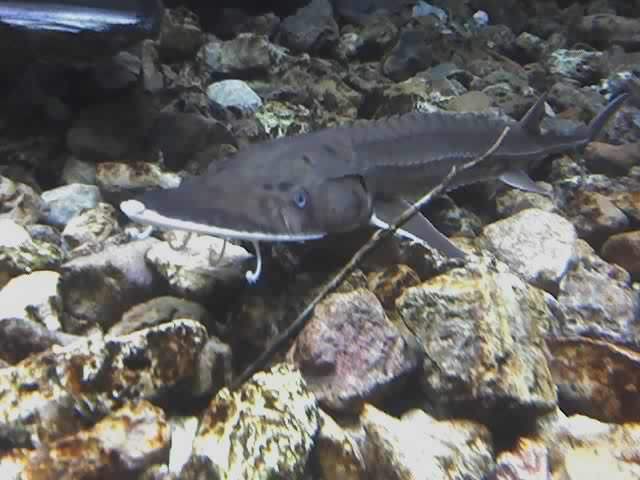
The Shovelnose Sturgeon is a large and unique-looking fish. They get their name from their long, narrow snout that resembles a shovel. This snout is great for digging around in the mud for food.
The body of the Shovelnose Sturgeon is long and slender. They have a series of scutes (bony plates) running down the length of their body. There are usually 5-7 of these scutes on each side.
The Shovelnose Sturgeon has a long dorsal fin that runs almost the entire length of their body. This fin has 22-25 rays in it.
They also have a long anal fin with 18-21 rays. Both of these fins are positioned towards the back of the fish.
The pectoral fins of the Shovelnose Sturgeon are large and triangular. They’re located just behind the head of the fish.
The caudal fin of the Shovelnose Sturgeon is forked and relatively small compared to the rest of their body.
The Shovelnose Sturgeon is olive-brown in coloration with a white belly. There are often dark spots on their body as well.
Lifespan
In the wild, shovelnose sturgeons can live for up to 25 years. But in captivity, they typically only live for 10 to 15 years.
One of the main reasons for this difference is that sturgeons in the wild have a lot more space to swim around. They’re also not typically subject to the same water quality issues that captive sturgeons face.
Additionally, sturgeons in the wild have a lot more food options. In captivity, they’re usually only fed a diet of pellets or fish food, which isn’t as nutritious as their natural diet.
Size
The average size of a shovelnose sturgeon is between 3 and 5 feet long. However, they can grow to be up to 7 feet long and weigh up to 200 pounds!
Tank
Tank Size
The recommended minimum tank size for a Shovelnose Sturgeon is 500 gallons. If you want to keep more than one fish, you should add an additional 250 gallons for each fish.
Water Parameters
The shovelnose sturgeon is a bottom-feeder that is common in the Mississippi River system. In the wild, they prefer deep, slow-moving water with a sandy substrate.
To replicate this environment in your aquarium, you’ll need to maintain the following water parameters.
- Water Temperature: 50°F to 75°F
- pH Levels: 7.0 to 8.5
- Water Hardness: 4 to 30 dGH
- Alkalinity Levels: 2-12 dKH
What To Put In Their Tank
When it comes to the Shovelnose Sturgeon, there are a few things you’ll need to take into account when setting up their tank.
First and foremost, these fish get huge. We’re talking over 6 feet long in some cases. This means you need a tank that can accommodate their size (1000 gallons or more).
The good news is that you don’t need to worry about a lot of decorations since these fish prefer a more natural habitat. That being said, there are a few things you should include.
First, you need a good quality filter. Sturgeon are messy eaters and produce a lot of waste. A powerful filter will help to keep the water quality high.
Second, you need to make sure there’s plenty of oxygen in the water. These fish are bottom dwellers and need access to oxygenated water. The best way to achieve this is with an air stone or powerhead.
Third, you need to include some hiding spots. Sturgeon are shy fish and need places to hide. Driftwood, rocks, and caves are all suitable options.
Finally, the substrate should be soft and sandy. Anything too harsh can damage their delicate skin.
Common Diseases
The most common disease that affects Shovelnose Sturgeon is White Sturgeon Disease. This is a bacterial infection that can be deadly if not treated properly and quickly.
The main symptom of this disease is large white lesions on the skin of the fish. If you see these, you need to act fast and get your fish to a vet as soon as possible.
Other potential diseases include:
Hepatosomatic Disease: This is a condition where the liver of the fish becomes enlarged. It’s most commonly seen in captive fish that are fed a diet that is too high in fat.
Swim Bladder Disease: This is a condition where the swim bladder (a gas-filled sac that helps the fish stay buoyant) becomes damaged or infected. It can be caused by a variety of things, including poor water quality, constipation, or even physical trauma.
If you think your fish might be sick, the best thing to do is to take them to a vet that specializes in fish. They will be able to properly diagnose and treat whatever is wrong with your fish.
Behavior & Temperament
Shovelnose sturgeon are gentle giants. Despite their size, they are very docile fish. They are not known to be aggressive at all and usually get along well with other fish.
They are a slow-moving fish, so they are not the best swimmers. They prefer to stay near the bottom of the tank where they can find food. They are also known to be a bit shy, so they may hide when there are too many people around.
Tank Mates
Shovelnose sturgeon are a bit difficult to keep. They’re very large and require a lot of space. They also need pristine water conditions and require a specialized diet.
Because of these factors, it’s best to only keep one shovelnose sturgeon per tank. They’re simply too much for most aquariums (and aquarium enthusiasts) to handle.
If you do have the space and resources to care for one of these fish, you’ll need to be careful about choosing tank mates.
The best tank mates for shovelnose sturgeon are other large, peaceful fish. They should also be able to tolerate cooler water temperatures since sturgeon prefer water on the cooler side.
Some good shovelnose sturgeon tank mates include:
- Catfish
- Carp
- Bichir
- Arowana
- Eels
- Knifefish
- Pacu
- plecos
Breeding
Shovelnose Sturgeon are a unique freshwater fish that is well-known for its long life span and prehistoric appearance. These fish are not easy to come by and can be very expensive, so many people choose to breed them instead.
If you’re interested in breeding Shovelnose Sturgeon, there are a few things you need to know first.
First, you need to have a male and female. It’s best to buy young fish so you can be sure of their gender. If you buy adults, you can try to sex them yourself by looking for the barbels on the male’s snout.
Once you have your male and female, you need to set up a breeding tank. The tank should be at least 200 gallons and should have a sand or gravel bottom. You should also add some plants and rocks for hiding places.
The water temperature should be between 60 and 70 degrees Fahrenheit. The pH should be between 6.5 and 7.5.
When the tank is set up, you can add the fish. The female will lay her eggs in the sand or gravel. The male will then fertilize them.
The eggs will hatch in about two weeks. The fry will be very small, so you need to feed them live food. Brine shrimp and bloodworms are a good option.
As the fry grow, you can start to feed them pellets. You can also add them to your main tank once they’re big enough.
Conclusion
The Shovelnose Sturgeon is an amazing fish that is perfect for the intermediate to advanced fish keeper. They are not a fish for beginners.
If you are looking for a fish that is low maintenance, then the Shovelnose Sturgeon is not the fish for you. They require a lot of care and attention.
But if you are willing to put in the time and effort, then the Shovelnose Sturgeon will be a great addition to your aquarium.

